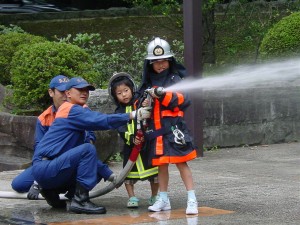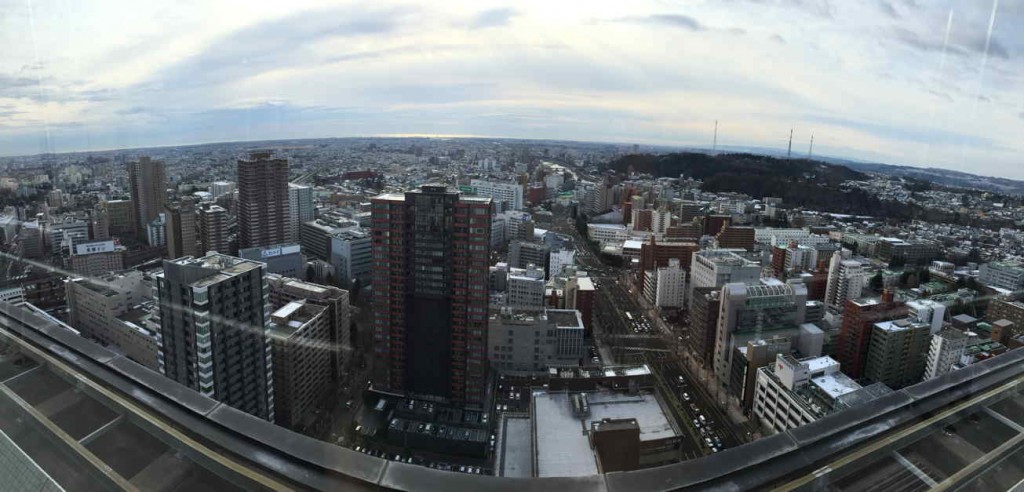
“We have supported the activities of volunteer disaster-prevention organizations based in neighborhood associations, which are the foundation of communities. In addition, we have promoted disaster-prevention measures which enable city government and local communities to work together.“
Location of Case Study
All areas of Sendai City, Japan
Priorities
We ensure that disaster risk reduction is a national and a local priority with a strong institutional basis for implementation. We use knowledge, innovation and education to build a culture of safety and resilience at all levels. We strengthen disaster preparedness for effective response at all levels.
Context
After experiencing the Miyagi Offshore Earthquake in 1978, Sendai declared itself the first Disaster-Prevention City in Japan, and worked toward safer city planning. After the Great Hanshin Awaji Earthquake in January 1995, we promoted disaster-prevention measures centred on responding to a large-scale disaster, including the development of a future vision for disaster prevention.

In the March 11, 2011 Great East Japan Earthquake, however, we suffered immense damage to public infrastructure. We also discovered many issues related to both evacuation operations and the provision of support to people who needed assistance in a disaster.
Through the experience, we rediscovered that the bonds between people in their communities save lives, and citizens’ regular disaster-prevention activities enhance their ability to respond to an emergency. This clearly indicated the importance and necessity of taking disaster prevention measures in local communities.
Addressing the Problem
In a large-scale disaster, public assistance is limited due to manpower shortages and the diverse needs of individual. Disaster-prevention activities such as early fire fighting, rescue and care for victims, as well as evacuation are more effective when locally organized.
In Sendai, since before the Great East Japan Earthquake, volunteer disaster-prevention organisations were the base of local disaster-prevention, and had been formed by 97.5 percent of neighbourhood associations. These associations carried out over 1,500 disaster-prevention trainings a year, and citizens played a leading role in preparing for a catastrophe.
In the 2011 disaster, the operation of evacuation centres and the provision of support to those requiring special care in a disaster became issues.
In accordance with the revised Sendai City Regional Disaster-Prevention Plan, we are now implementing various projects to promote self-help and mutual assistance initiatives. These initiatives aim to make the activities of community groups, including neighbourhood associations, more organised and effective. A major example is the establishment of an operation system for the Designated Evacuation Centres established at 191 city schools.

After discussion among facility managers, city officials, and neighbourhood associations and other community organisations in the vicinity of designated evacuation centres and supplementary evacuation centres, our city has encouraged them to create community-based evacuation centre operation manuals tailored to the conditions in each community. In addition, the three groups established evacuation centre operation committees that conduct organised activities.
In addition, with the aim of fostering leaders who can take charge of neighbourhood associations’ disaster-prevention activities, we are engaged in a project to train “Sendai local disaster-prevention leaders.” We planned to train 600 leaders in the four years from 2012 to 2015. So far, 197 citizens have completed the course.
We have also designated the months of June, September and November each year as Disaster Prevention/Disaster Risk Reduction Months in which we conduct evacuation drills, evacuation centre operation training, and tsunami evacuation training in cooperation with local community groups.
Volunteer disaster-prevention organisations such as neighbourhood associations also conduct trainings including firefighting, rescue and assistance, and emergency food preparation to enhance mutual understanding of each person’s role when a disaster occurs.
To enliven volunteer disaster-prevention organisations, some community groups hold training games using disaster maps or created local hazard maps. Sendai city supports these initiatives.
In 2014, we implemented various kinds of disaster-prevention trainings including our first tsunami evacuation drill simulating a night time disaster along with volunteer disaster prevention/evacuation centre operation trainings.
Results
We believe our efforts will contribute to raising awareness of disaster prevention and to routine preparation in local communities in the future.
Measuring Success
Evaluation of the evacuation centre operation manuals created in each community focuses on the following points:
In addition, we are attempting to raise the quality of manuals citywide by sharing exemplary manuals with other communities.
We also ho trainings based on the manuals and revising the manuals based on the results of the trainings.
Relevance to the Hyogo Framework for Action (HFA)
We have encouraged local communities and related organizations to actively participate in disaster-prevention activities aimed at reducing disaster risk and have created a system for the implementation of disaster-prevention measures.
Potential for Replication
We believe that the series of disaster-prevention measures implemented by our city in cooperation with local communities, including the creation of evacuation centre operation manuals, fostering leaders at voluntary disaster-prevention organizations, and comprehensive disaster-prevention trainings, have potential for replication both in Japan and abroad.
Contributed by City of Sendai Crisis Management Department